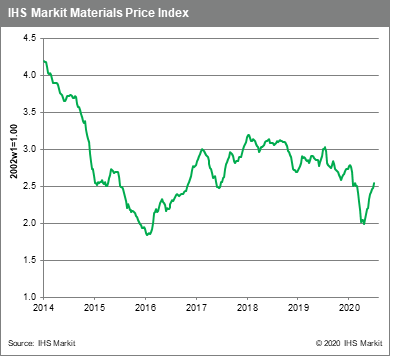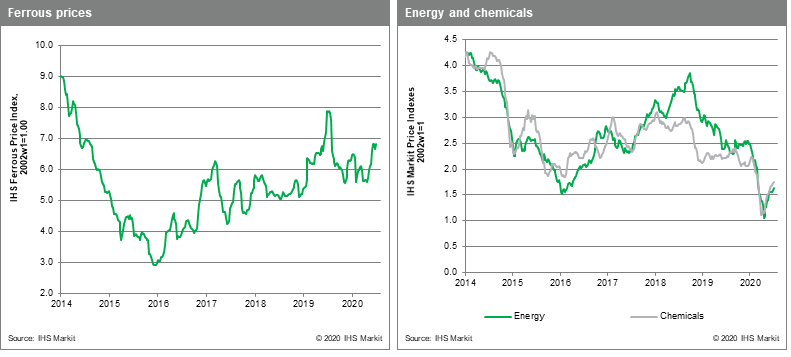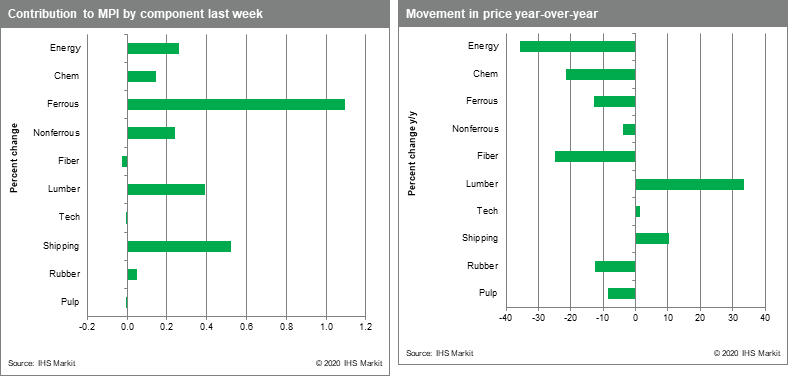Weekly Pricing Pulse: How far can commodities keep rising?
Commodity prices, as measured by our Materials Price Index (MPI), powered higher for a tenth-straight week, rising 2.7% in another broad-based move. Markets are shrugging off higher COVID-19 case counts and are instead focusing on production cuts, supply disruptions and improving demand to push prices higher. While the global economy has clearly turned a corner, our caution remains that the reaction in commodity markets seems "enthusiastic" given our near-term forecasts for physical consumption and the amount of capacity available.

Ferrous prices led the MPI higher last week, rising 2.7%. Iron ore
CFR China rose 3.2% to $105/mt by week's end and continued in
Monday trading to $111/mt due to an uptick in Chinese rebar demand
and in spite of record iron ore exports from Australia. The MPI's
energy index rose strong 2.6%, mainly due to a 4.5% rise in crude
oil prices driven by a 6.3% rise in OPEC crude prices which have
been playing catch-up with Brent, the spread between the two
markers having reached as wide as $5 /bbl in May. The non-ferrous
sub-index increased 2.5% and is now up 17.9% from its first quarter
low. Copper again showed strength rising 3.1% on the threat of
strikes in Chile. Nickel rose 3.9%, benefiting from Chinese buying,
a factor supporting the entire base metals complex. Lumber rose
12.3% as exceptionally strong demand in Canada outpaced supply,
cleaning suppliers out in some cases. Lumber prices are now up
24.3% year-to-date, which, along with freight, are the only prices
in the index up from the start of the year. Finally, bulk freight
rose another 11.0%. The rally in ocean going bulk charter rates has
run out of steam as volumes from Brazil cooled slightly.

With materials demand still well down from pre-COVID-19 levels,
notable upward weekly price moves are coming from commodity groups
impacted by production cuts and disruptions related capacity
restrictions e.g. crude oil, base metals, freight and lumber. Some
producers not constrained by COVID-19 safety restrictions do seem
to have been caught out by the strength of the current rally. With
capacity utilization in many sectors low, however, this raises the
risk that supply will start to creep back in production,
incentivised by higher prices. Given the underlying softness in
demand, this could expose markets to a correction. The "V" shaped
recovery now being priced-in to many markets seems increasingly at
odds with this underlying fundamental.
